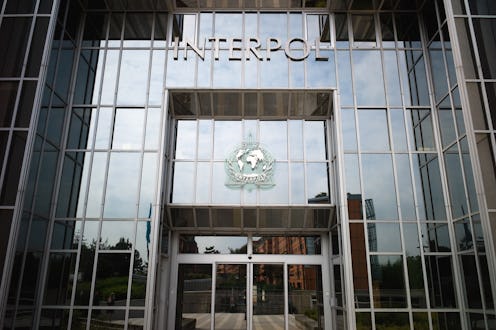News
How Do INTERPOL's Red Notices Work?
A week after the massive FIFA arrest at the posh Baur au Lac Hotel in Zurich, INTERPOL has issued Red Notices for FIFA officials and several executives, adding them to its wanted list. These wanted persons include two FIFA officials and four corporate executives indicted for various corruption charges over a 24-year scheme. The organization posted mug shots of the six men on its website with its Red Notices, which were requested by the U.S. and alert the international community that an arrest warrant has been issued for certain individuals. One of seven color-coded INTERPOL notices, the Red Notice is the most notorious one.
At the request of U.S. authorities, the International Criminal Police Organization issued Red Notices for two FIFA officials — former FIFA Vice President Jack Warner and former FIFA executive committee member Nicolás Leoz — and four business executives — Alejandro Burzaco, Hugo and Mariano Jinkis, and José Margulies — on charges including racketeering, conspiracy, and corruption. These Red Notices alert the international community that arrest warrants have been issued for these six men and local authorities are to apprehend them wherever they're found for extradition or other lawful action.
Though INTERPOL agents do not have the authority to arrest wanted persons themselves, the organization coordinates with the national police in its 190 member countries to facilitate the arrest of individuals. And Red Notices are just one of the ways in which INTERPOL helps international law enforcement make those arrests. According to the United States Department of Justice, "an Interpol Red Notice is the closest instrument to an international arrest warrant in use today."
The process is simple. Once a member country makes a request for INTERPOL to issue a Red Notice, the individuals in question get added to the international lookout list distributed to all member countries. When these persons are located by local police, the country that requested the notice will be alerted and can either decide on a provisional arrest, which is used in more urgent cases, or file for extradition.
Red Notices are just one of seven color-coded notices that INTERPOL uses. Here are the six others:
- Blue: To identify information on a person of interest in a criminal investigation.
- Green: To warn about individuals who have committed a crime and are likely to be a threat.
- Yellow: To help locate missing persons, including minors or those who are unable to identify themselves.
- Black: To seek information on unidentified bodies.
- Orange: To warn about a person, event, object, or process that poses an imminent threat to public safety.
- Purple: To seek information on modi operandi, objects, devices, and concealment methods used by criminals.
INTERPOL's Red Notices come one day after FIFA President Sepp Blatter announced his resignation amid mounting international pressure. Though there have been no charges brought against him at this time, The New York Times reported that Blatter has become part of the ongoing corruption investigation. Images: Getty Images (2)
